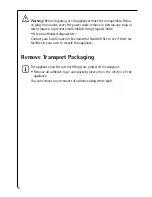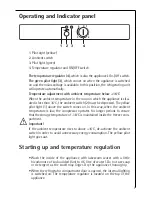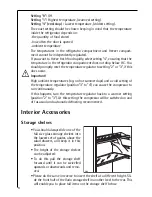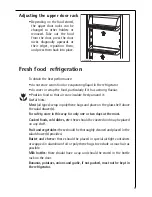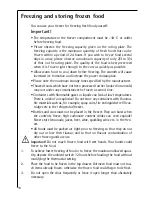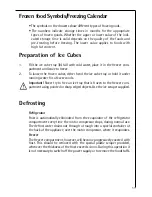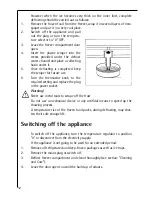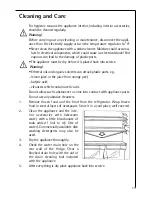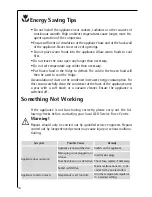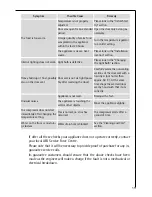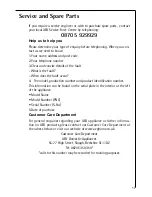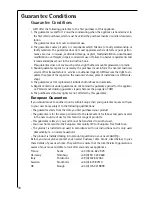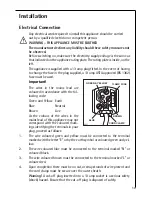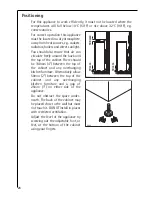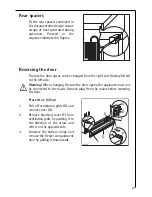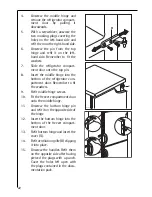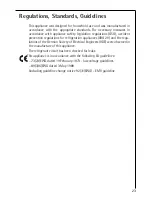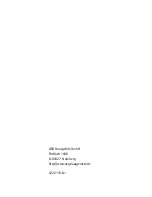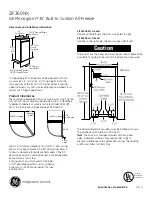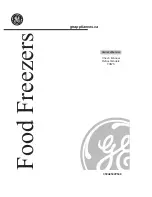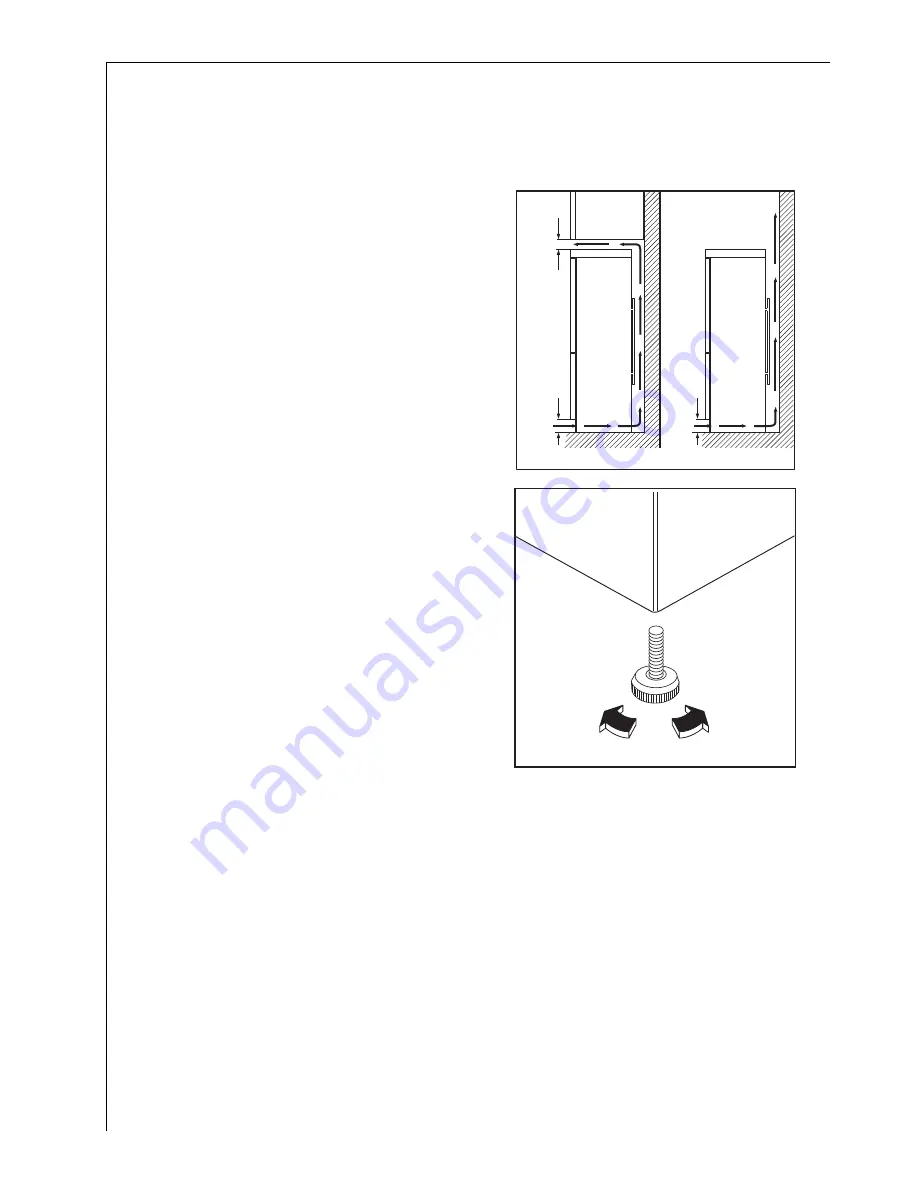
5
There is a risk of an explosion! Do not store any containers with flamma-
ble materials such as, for example, spray cans, fire extinguisher refill car-
tridges etc in the refrigerator/freezer.
• Bottles and cans must not be placed in the freezer compartment. They can
burst when the contents freeze, high carbonate content drinks can even
explode! Never store lemonade, juices, beer, wine, sparkling wine etc. in
the freezer compartment.
• Ice cream or ice cubes can cause “frost/freezer” burns if consumed strai-
ght from the freezer.
• Do not touch frozen food with wet hands. Your hands could freeze to the
food.
• Do not operate any electrical appliances in the refrigerator/freezer (e.g.
electric ice cream makers, mixers etc.).
• Before cleaning the appliance, always switch off the appliance and
disconnect from the electricity supply.
• When unplugging always pull the plug from the mains socket, do not pull
on the cable.
Service
• Under no circumstances should you attempt to repair the appliance your-
self. Repairs carried out by inexperienced persons may cause injury or
serious malfunctioning. Contact your local AEG Service Force Centre.
Disposal
Appliance Packaging Information
All materials are environmentally sound.
The plastics can be recycled and are identified as follows:
>PE< for polyethylene, e.g. the outer covering and the bags in the interior.
>PS< for polystyrene foam, e.g. the pads, which are all free of chlorofluo-
rocarbon.
The carton parts are made from recycled paper and should be disposed of
at a waste-paper recycling collection location.
Disposal of old Appliances
For environmental reasons, refrigeration appliances must be disposed of
properly. This applies to your old appliance, and - at the end of its service
life - to your new appliance as well.
20
NP002
100 mm
10 mm
10 mm
Positioning
For this appliance to work efficiently, it must not be located where the
temperatures will fall below 10°C (50°F) or rise above 32°C (90°F), e.g.
conservatories.
For correct operation this appliance
must be located in a dry atmosphere,
away from heat sources, e.g. cookers,
radiators, boilers and direct sunlight.
You should also ensure that air can
circulate freely around the back and
the top of the cabinet. There should
be 100mm (4”) between the top of
the cabinet and any overhanging
kitchenfurniture. Alternatively allow
50mm (2”) between the top of the
cabinet and any overhanging
kitchen furniture and a gap of
25mm (1”) on either side of the
appliance.
Do not obstruct the space under-
neath. The back of the cabinet may
be placed close to the wall but must
not touch it. DO NOT install in places
with restricted ventilation.
Adjust the level of the appliance by
screwing out the adjustable foot, or
feet, at the bottom of the cabinet
using your fingers.
D200

